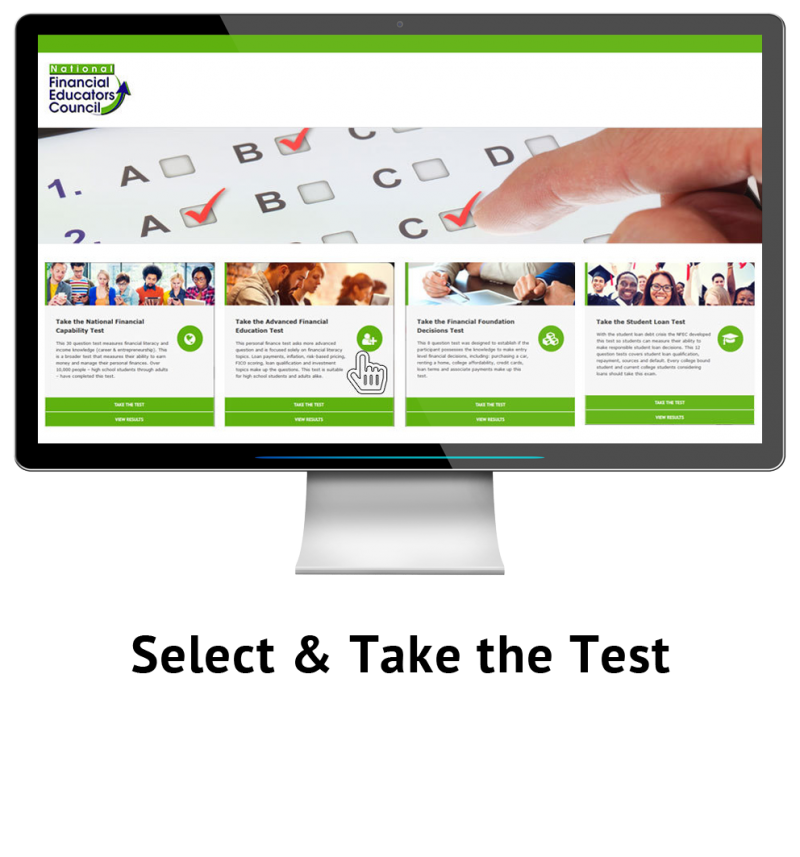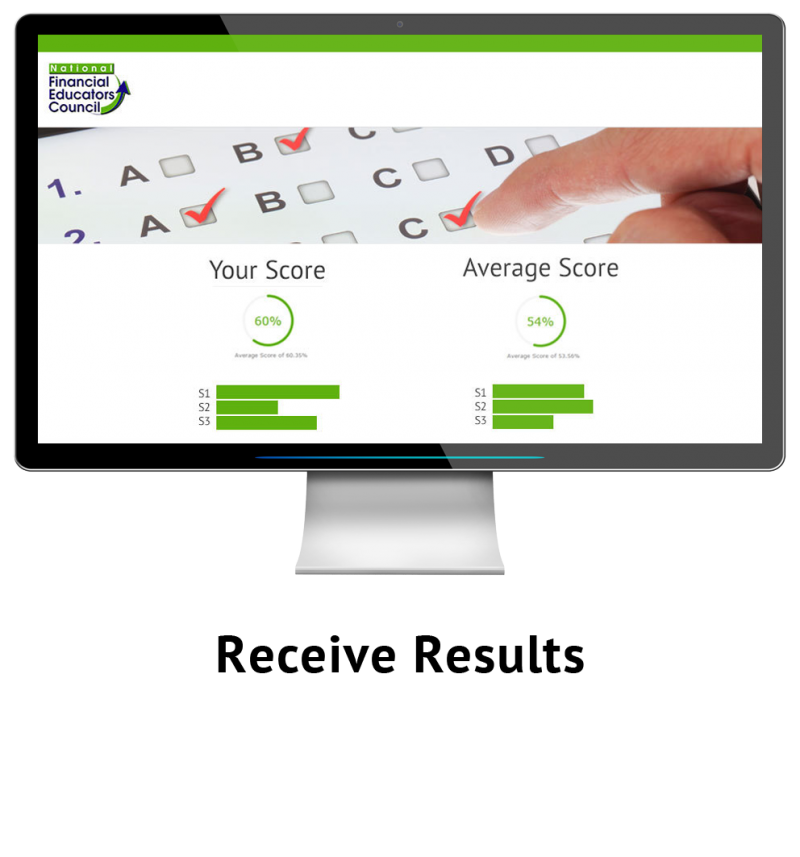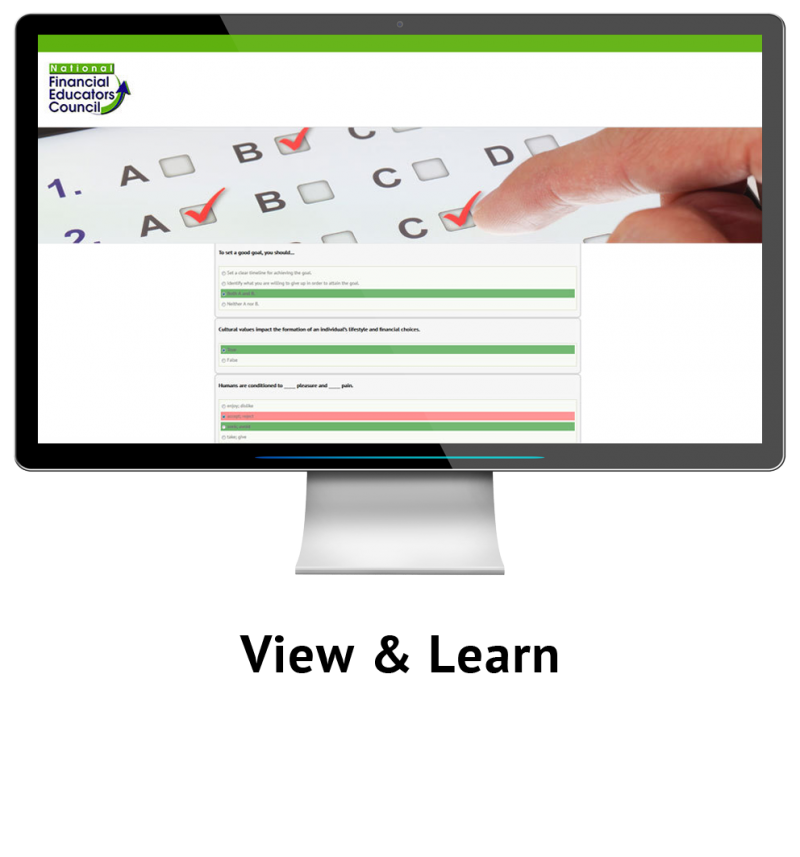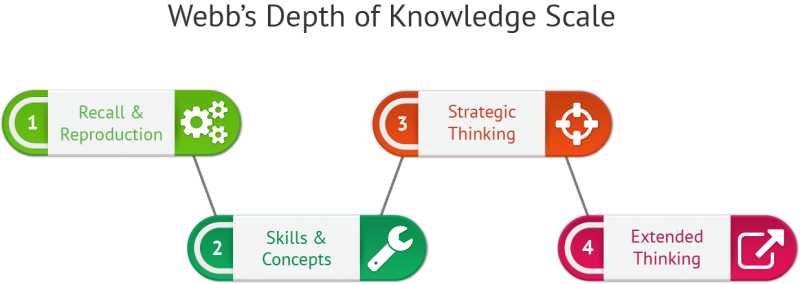The Power of a Financial Literacy Practice Test is Often Underrated
Data are valuable. We can’t track what we don’t measure. If your financial education program does not include extensive testing specifically designed to reveal specific aspects of performance, you’re missing out on valuable opportunities to improve efficiency and leverage the success of a program and the learners.
The NFEC provides the power of the right interpretation of the right data at the right time and how to implement the lessons they give us.
Our Comprehensive Basic Financial Literacy Tests
Our comprehensive financial literacy tests measure 5 distinct areas of personal finance, each critical to individual success. Those who complete the full program can earn their financial literacy certification. Tracking financial knowledge is obviously essential, but what’s hidden under the surface that might play a critical role in personal financial success? We all have deep-rooted attitudes toward money which affect what we do with it. Most of these fundamental relationships remain unconscious, yet they must somehow be addressed and changed to a healthier disposition toward money. We also measure the actions students take with their own finances after the program ends. This leads to the ultimate measure of success as described in the NFEC’s financial literacy definition by measuring improvement in students’ personal financial situations after the program. A comprehensive financial literacy practice test will address all these critical issues.
Financial Literacy Practice Tests Reveal Level of Understanding
Students can absorb only so much information at a time from the financial literacy resources. Information needs time to absorb and become somewhat rooted in a person’s mind, but that’s only Stage 1 of learning. Once a person remembers and can recall the information, they have a basis of understanding to apply the skills and concepts to their own lives. Then they can progress further along Webb’s Depth of Knowledge and Bloom’s Taxonomy of Higher Order Thinking. We measure students’ level of understanding before we move on to the next level. This process keeps the students challenged but not overwhelmed and helps prepare them for their financial literacy final exam.






